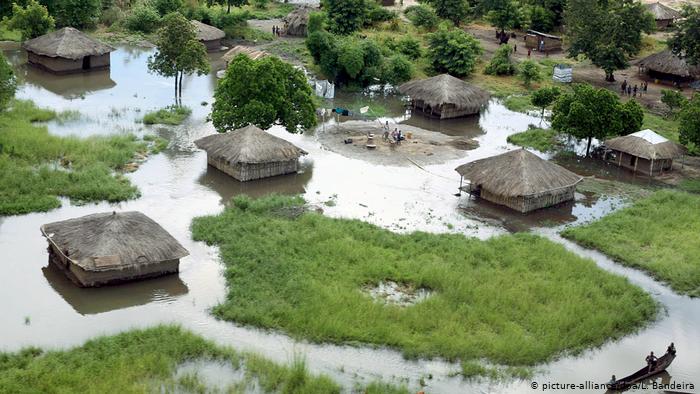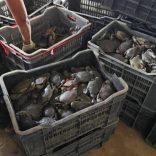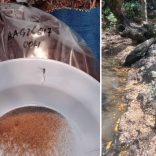Mozambique: Authorities seize a tonne of undersized live crab in Angoche
Mozambique: 1,400 tonnes of crops washed away

FILE - For illustration purposes only. Floods in the Zambezi Valley. [File photo: DW]
- Officials estimate that 559 families in Mutarara district, Tete province, are affected. Farmers continue to risk farming in flood zones for the sake of survival.
Mozambican authorities estimate that 1,400 tonnes of various crops have been lost in the centre of the country under the rising waters of the Zambezi river, after the announced discharges from the Cahora Bassa dam.
The warnings which one official entity claims to have issued seem not to have reached another, with, in the end, hundreds of families losing the fruits of their subsistence agriculture – the way of life of most Mozambicans.
Persistent farming on flood zones is an age-old problem, with the struggle to convince farmers to look elsewhere repeated annually, but with little success.
“When the floodgates of the dam opened, the families were taken by surprise and had no time to collect all the production,” said Adérito Taminho, head of the agriculture and fisheries division of the National Inspection of Economic Activities (INAE) in Mutarara, Tete province.
Taminho said the opening of the dam’s floodgates raised water levels, destroying about 640 hectares of crops, including corn, beans and vegetables, which correspond to about 1,400 tons of products.
The situation affected 559 farming families in Mutarara district, Tete.
Read more: Farms ruined after Mozambique dam opens floodgate – BBC

Communication delay
According to the INAE, Zambezi basin managers had issued communiqués to alert farmers, but “this time [the communiqué] was delayed and the hydroelectric plant opened its floodgates on schedule”.
“The communique arrived after the event. Most families still have something to consume, but it will not be enough to last until the next harvest,” sometime in April 2021, Taminho said.
However, Custódio Vicente, director general of the Regional Water Administration (ARA) for the Centre of Mozambique, which manages the Zambezi basin, told Lusa that the statement was sent “far in advance”, and that the opening of the floodgates is “a regular and necessary operation”, carried out before the rainy season to free dam capacity.
“Two weeks before the discharges, in September, there was warning and awareness raising in the community. We do this every year to ensure that the dam can withstand any floods which may occur,” he said.
“We have to prevent the events from coinciding, that is, avoid making discharges at the same time that heavy rains are falling, when the impact would be much greater.”
Risking for survival
According to Custódio Vicente, the community practices agriculture along the river during the dry season, something which should not happen in that area. “These [agricultural] activities are carried out within the flood plain, and when the floodgates are opened, these are the consequences. The water is within its proper space, and we have to get used to giving space to the riverbed, to the river,” he explained.
Several provincial authorities, especially in the north and centre of the country, have been running awareness campaigns since October to remove residents from the main Mozambican rivers’ flood plains. The current rainy season, which started on October 1, has so far killed 22 people and affected another 16,057, according to government figures.
The situation mainly affects the centre and north of the country. Even families who follow the recommendations usually return to the flood zones to farm – the principal activity of the most of the country’s population.
. “Most of the families were removed in previous years, and they already know the history of flooding in those areas. But they come back because it is the basis of their subsistence,” National Institute for Disaster Management (INGC) Zambézia delegate Nelson Ludovico said.
It has always been this way, even after Cyclones Idai and Kenneth killed almost 700 people in 2019, he adds. “Even with resettlement, in the dry season, they are back [in the risk areas].”
Alberto Armando, INGC delegate in Nampula, says the same thing. Farmers are “almost permanently in those regions. It is not possible to avoid it, because that is where they have their subsistence base”.













Leave a Reply
Be the First to Comment!
You must be logged in to post a comment.
You must be logged in to post a comment.